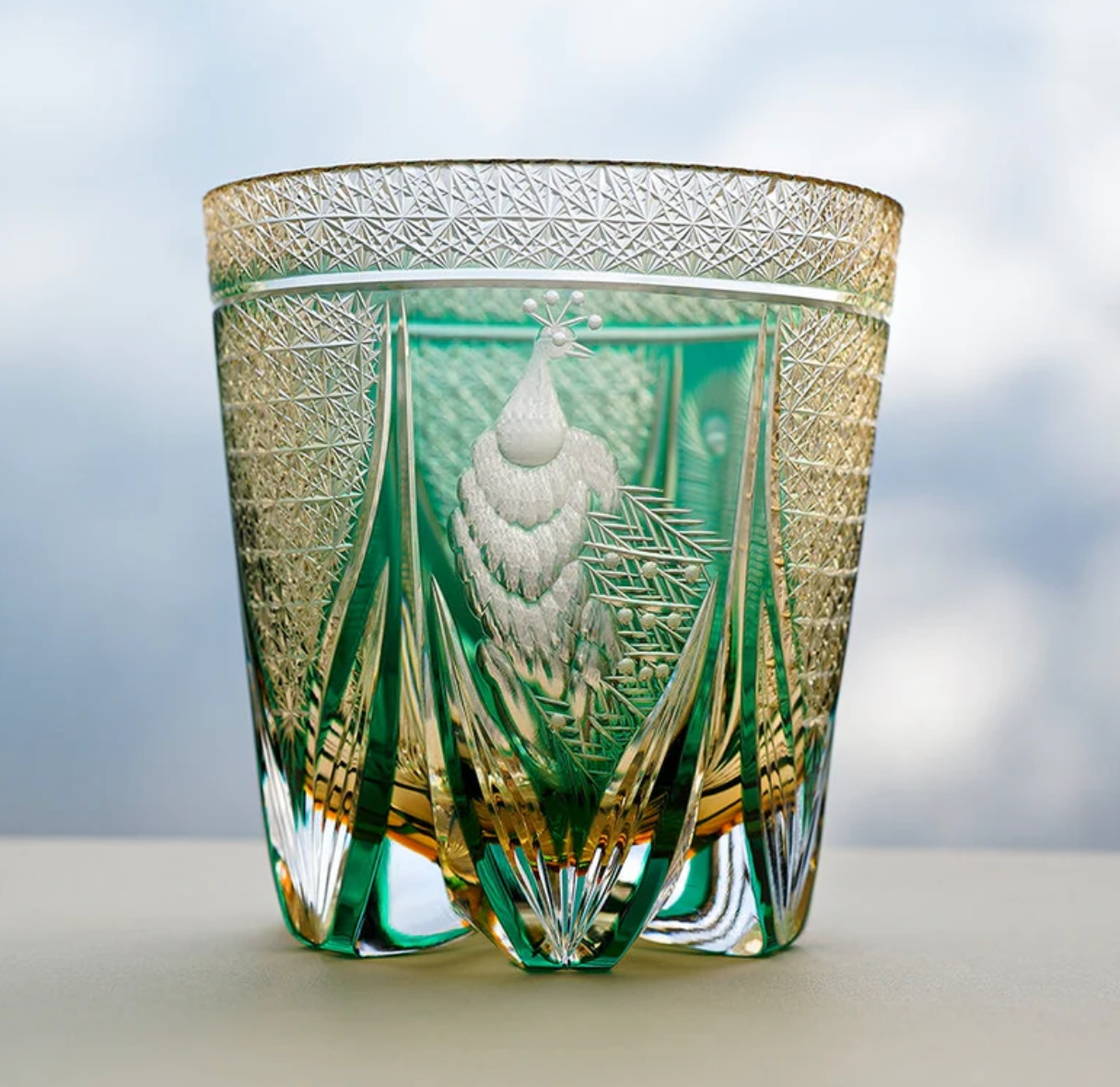Masters of Light and Line - Edo Kiriko Artisans
In the heart of Japan, a profound tradition has been meticulously handed down, transforming simple crystal into breathtaking works of art. This is the world of Edo Kiriko, a form of cut glass that originated in the Edo period and has since become a dazzling symbol of Japanese artistry. Each whisky glass is not merely a vessel but a canvas of light, patiently hand-etched with intricate, kaleidoscopic patterns. The masters of this craft are more than just artisans; they are visionaries, their hands shaping light and shadow into a symphony of liquid elegance. And now, we invite you to meet the hands that shape this legacy.

Kaito Tanaka 田中 海斗
With a lineage of artisans stretching back to the Meiji era, Kaito Tanaka is a living embodiment of Edo Kiriko's heritage. He is celebrated for his precise, almost impossibly fine cuts, a skill honed over decades in his family's workshop. Tanaka-san's signature is the nanako or "fish-scale" pattern, which he imbues with a mesmerizing, iridescent quality, making each glass shimmer like a kaleidoscope of light. His work is not merely a product but a continuation of an ancestral whisper, a tribute to the delicate balance between form and function.

Akemi Mori 森 明美
Breaking through a historically male-dominated field, Akemi Mori is a celebrated master whose work is a vibrant fusion of strength and delicacy. She is particularly acclaimed for her use of unconventional colors and for incorporating motifs inspired by nature, such as cherry blossoms and flowing water. Mori-san's bold lines and graceful curves breathe new life into the traditional yarai or "bamboo fence" pattern, transforming it into a dynamic expression of natural beauty. Her creations are a powerful statement, proving that the future of Edo Kiriko is as diverse and brilliant as its past.

Haruki Kobayashi 小林 春樹
A visionary who has seamlessly blended tradition with modern aesthetics, Haruki Kobayashi is known for his bold, contemporary interpretations of classic Edo Kiriko patterns. He often works with vibrant, two-tone crystal, creating a striking contrast between the inner and outer layers of the glass. Kobayashi-san's pieces, which feature dynamic, geometric cuts inspired by the urban landscape of Tokyo, are a testament to his belief that traditional crafts must evolve to remain relevant. His innovative spirit has earned him a new generation of admirers, all seeking a piece of history with a modern twist.

